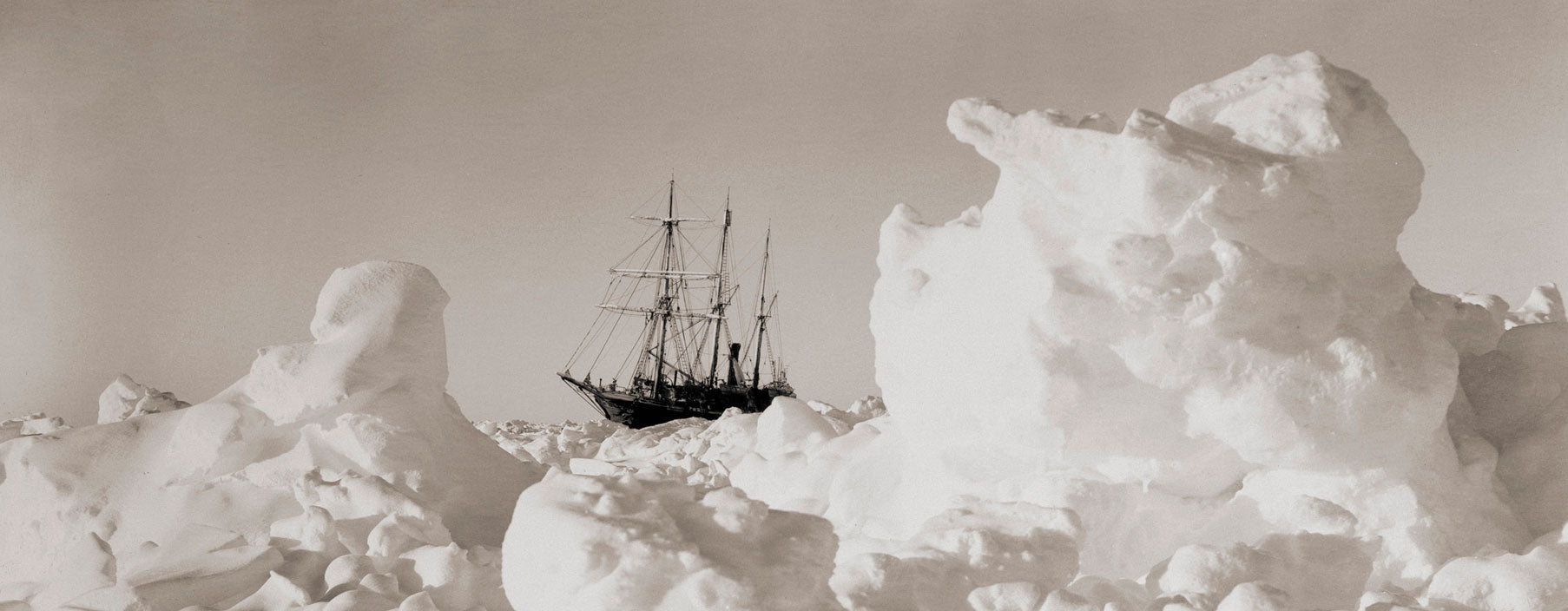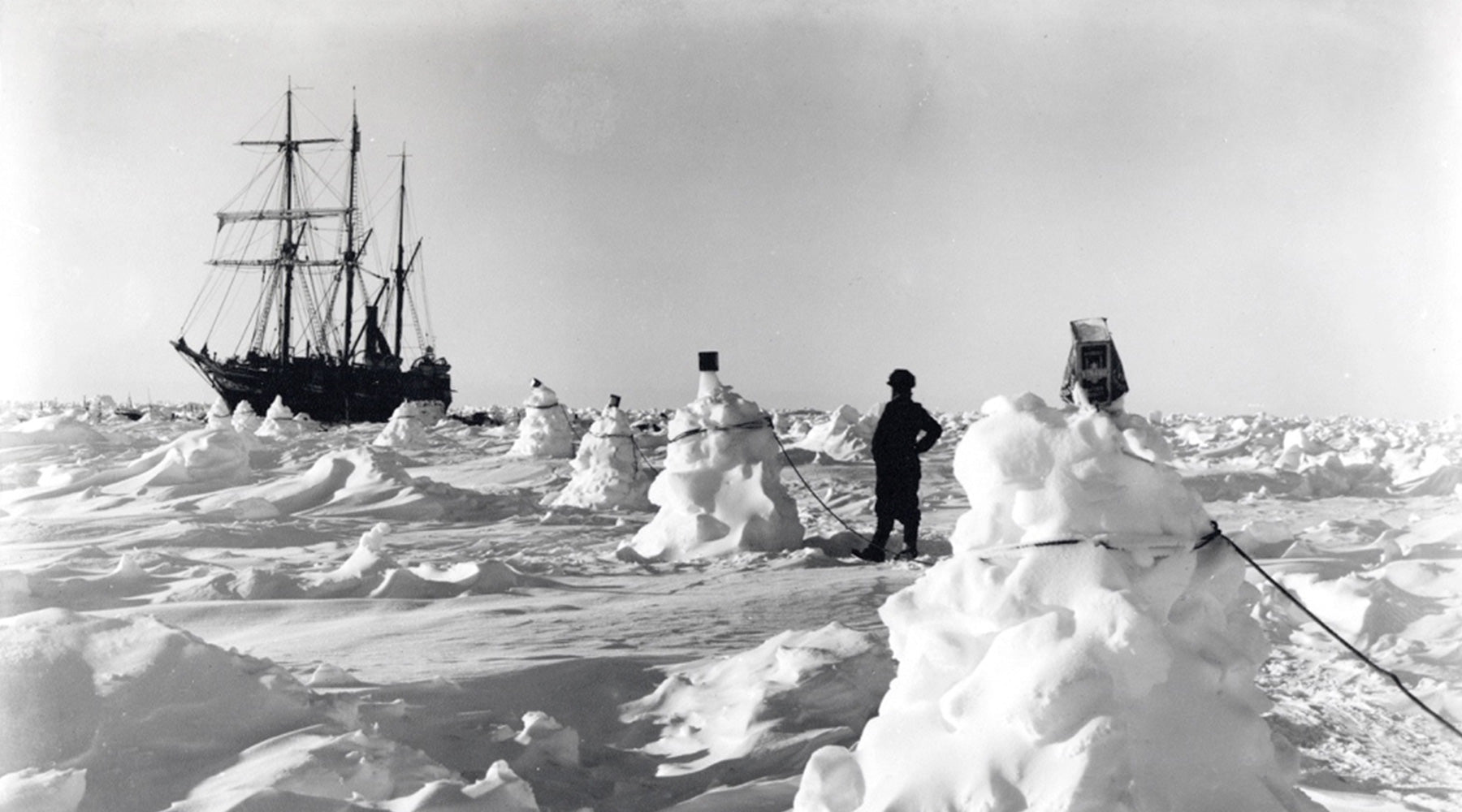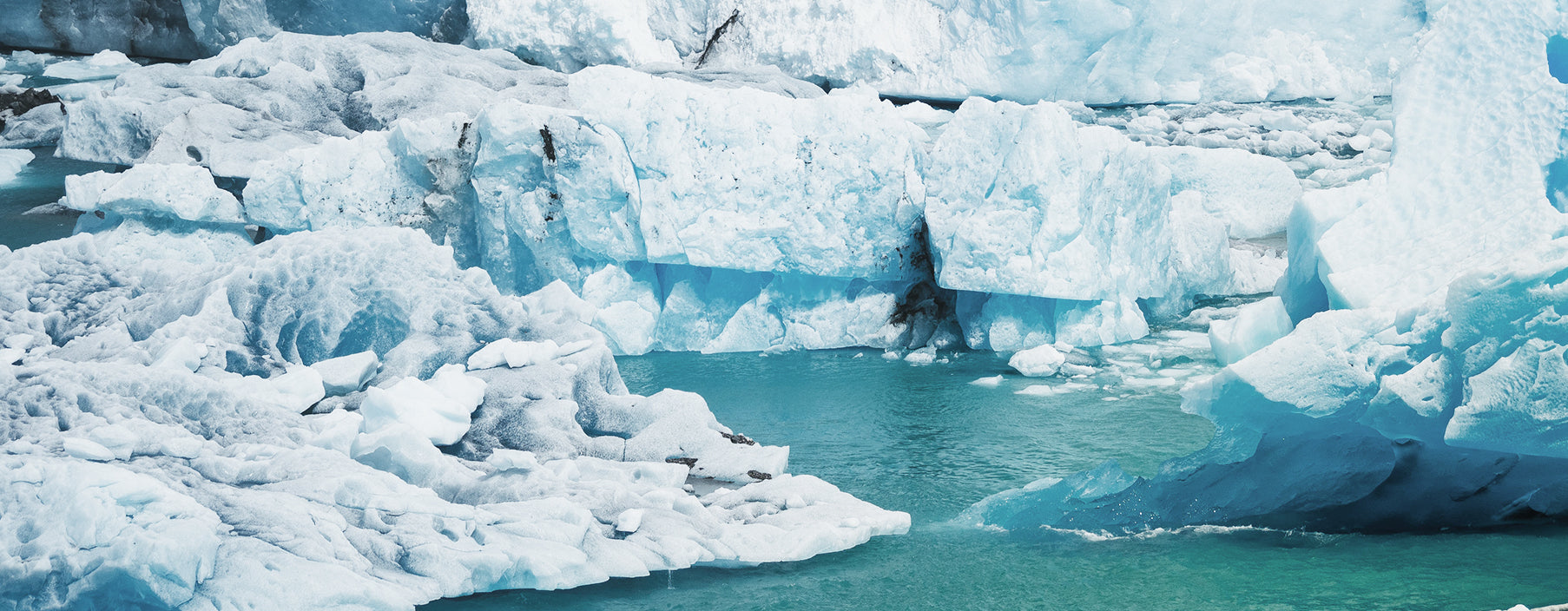
PLATINUM PRINTS // THE DETAILS
"During the day I hacked through the thick walls of the refrigerator to retrieve the negatives stored therein. They were located beneath four feet of mushy ice and, by stripping to the waist and diving under, I hauled them out. Fortunately, they are soldered up in double tin linings, so I am hopeful they may not have suffered by their submersion. On return to camp my team bolted owing to a killer whale breaking through the ice but 10 yards ahead…"
Frank Hurley’s diary, 2 November 1915
Shackleton’s enduring legacy is due, in no small part to Australian Frank Hurley, the official photographer and filmmaker commissioned by Sir Ernest Shackleton to document his ‘Endurance’ expedition of 1914-18. Hurley’s astonishingly beautiful and vivid photographs of the ‘Endurance’ expedition provide us with an extraordinary sense of connection with the expedition and the crew’s journey from optimism to disaster, deprivation and redemption.
Thanks to an ongoing collaboration between The Royal Geographical Society (with The Institute of British Geographers) and Salto Ulbeek Publishers in Belgium, Hurley’s original glass plate and celluloid negatives brought back from the ‘Endurance’ expedition have been used to produce the first ever collection of limited edition platinum palladium prints of his ‘Endurance’ photographs. These constitute a unique contribution to the presentation, preservation, and contextualisation of the ‘Endurance’ story and Hurley’s photographs of this epic tale of survival.
In addition to their expanded tonal range, three-dimensionality, and a uniquely luminous quality, platinum palladium prints are among the most permanent objects produced by man. The platinum metals are more stable than gold, and a platinum palladium image, properly preserved, can last thousands of years. Or far beyond the life of the original negatives. This is particularly poignant considering Hurley’s original negatives are themselves ‘survivors’. After being saved from the sinking ship by Hurley, they too made that remarkable journey to Elephant Island and eventually back to London following Shackleton’s rescue of Hurley and the other twenty-two men he’d left behind as he set off to South Georgia onboard the James Caird.
It is our pleasure to offer a selection of the limited edition platinum palladium prints produced by Salto Ulbeek from the Royal Geographical Society (with IBG)’s collection of Hurley's original 'Endurance' negatives. Each print comes with a certificate identifying the print number and can be securely shipped worldwide.
This limited edition collection of platinum palladium prints provides the collector with a unique opportunity to be a part of the centenary year in which Sir Ernest Shackleton’s ship, the Endurance, was re-discovered over 3,000 metres below the surface of the Weddell Sea.

2. The Endurance crushed by the ice packs 300 miles from land
Salto Ulbeek
Salto Ulbeek Publishers is based in Belgium. Over the past two decades it has built a reputation for uncompromised excellence in photographic and offset printing, thanks to experimentation and the combination of historic and modern printing methods. Committed to the publication of limited edition photographic books and portfolios, Salto Ulbeek strives to provide the utmost production value and interpretive sensibility to the work of past and living photographers, and through this, to secure the preservation and appreciation of key historic and contemporary photographic images.
Platinum Palladium Printing
The great American photographer Alfred Stieglitz called platinum palladium printing “the prince of all media”. The platinum palladium printing technique is the most stable and aesthetically rewarding of all black and white photographic processes. Produced by coating specially manufactured paper with a light-sensitive emulsion containing platinum and palladium salts, platinum-palladium prints exhibit an expanded tonal range, three-dimensionality, and a uniquely luminous quality. Their permanence makes them the medium of choice for securing photographic archives and legacies far beyond the life of the original negatives.


